This floral and fruity elderflower cider makes a uniquely refreshing drink. In addition, it is a creative way of preserving apples.
One of my favorite ways of preserving apples is making apple juice hard cider. However, this time of the year, I wanted to experiment and try a new version by adding my favorite elderflowers into the mixture. Thus started a bit ahead of time.
While I am not an apple grower myself, our farmer next door has many apples of organic quality that are dropping, and he allows me to collect them. While they are not very tasty when eaten fresh, they are delicious when fermented into an organic hard cider.
I am a bit obsessed with elderflower drinks such as elderflowers cordial or liqueur. And when I tried a delicious elderflower cider in the restaurant the other day, I decided to try it too.
I found making apple juice hard cider an easy and rewarding process that is worth trying, even if you are a beginner.
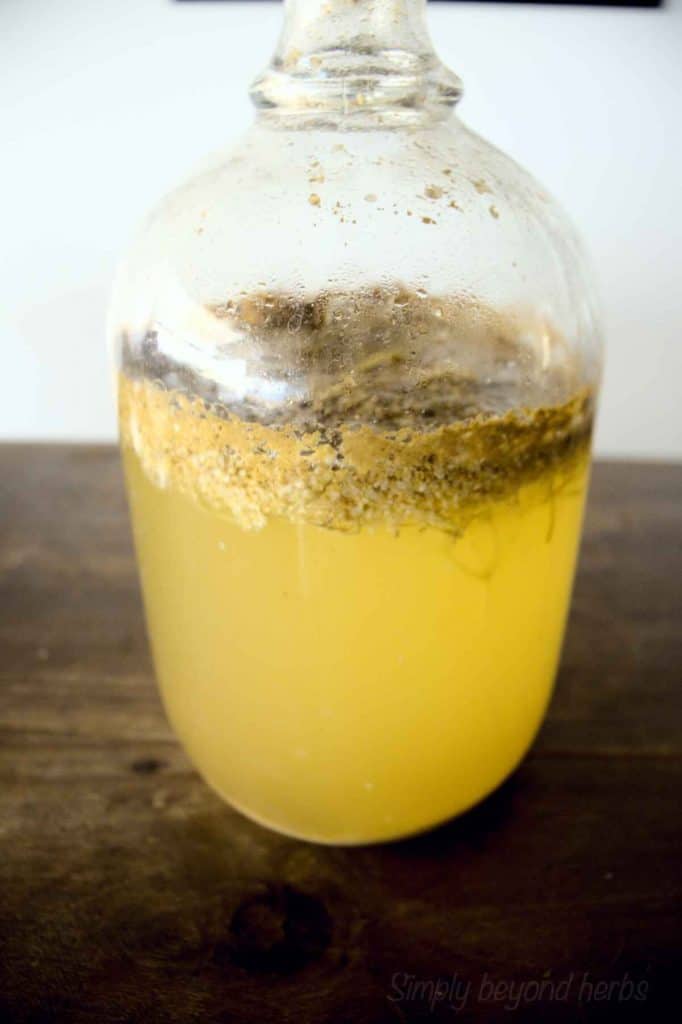
What is Elderflower cider?
Elderflower cider is an alcoholic beverage that is made from fermented apple juice infused with Elderflowers. While apple juice made from pressing the apples is naturally sweet, hard elderflower cider has had all its sugars naturally fermented into alcohol. Thus most often the final elderflower hard cider is not sweet at all and can be therefore called elderflower wine or elderflower champaign.
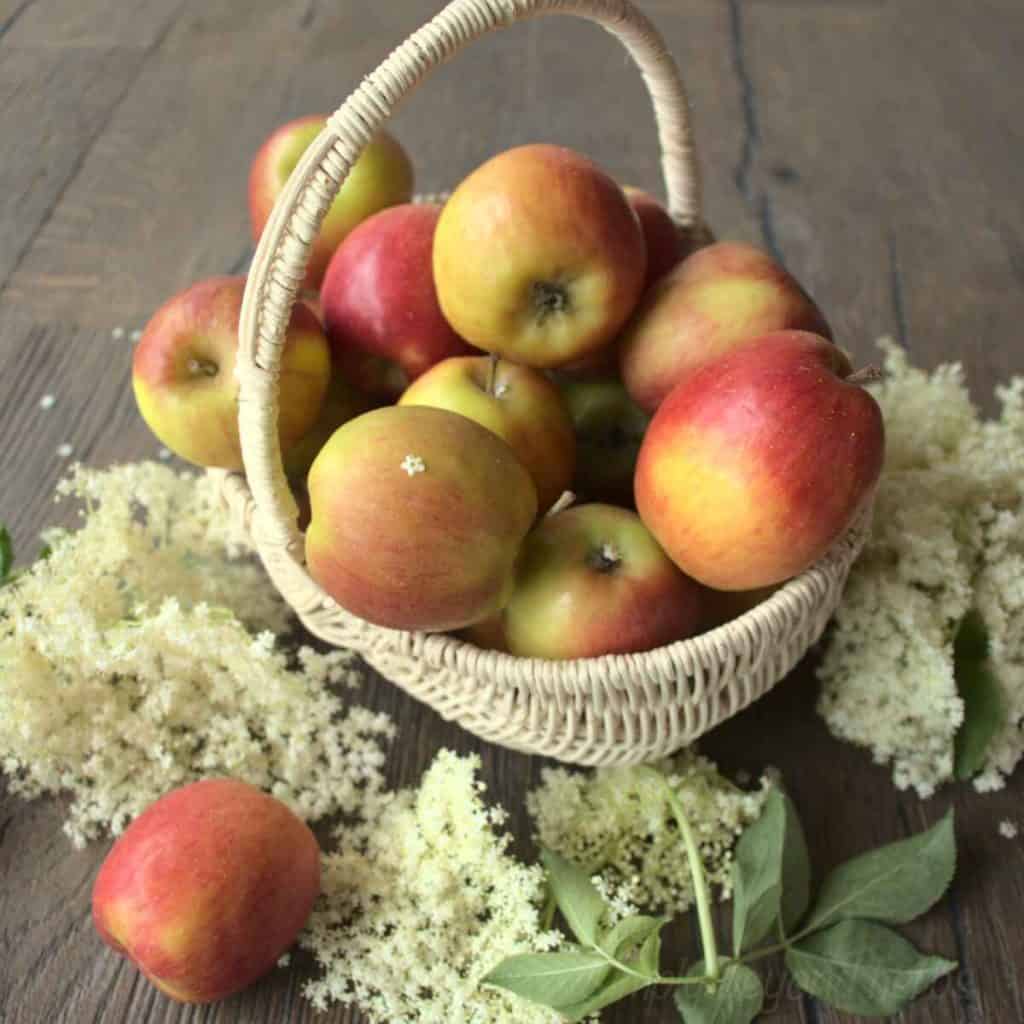
Ingredients you need
Elderflowers
fresh or dried. To make one gallon of elder flower cider you will need fifteen elderflower clusters. When you collect them on a sunny day, don’t wash them. Just carefully observe them, remove any bugs and let them wilt before infusing them in a cider. Their pollen is an important carrier of a taste and scent thus valuable for our elderflower cider. Pollen will add a specific fruity and floral taste to the organic hard cider plus elderflower’s immune boosting properties enhance the final elderflower cider as well.
Apples
You may need fresh apples. Whether you grow your own apples or you have neighbors who need help with the overproduction of apples. Alternatively, you can buy cheap apples from the shop.
The apples however should be juicy, sweet and well-ripened as these contain the perfect natural acid levels and tannins.
You may also use store-bought fresh orchard pressed cider or fresh apple juice, as long as they are preservative-free. Check the label as very often store-bought cider contains potassium sorbate that makes cider unable to ferment.
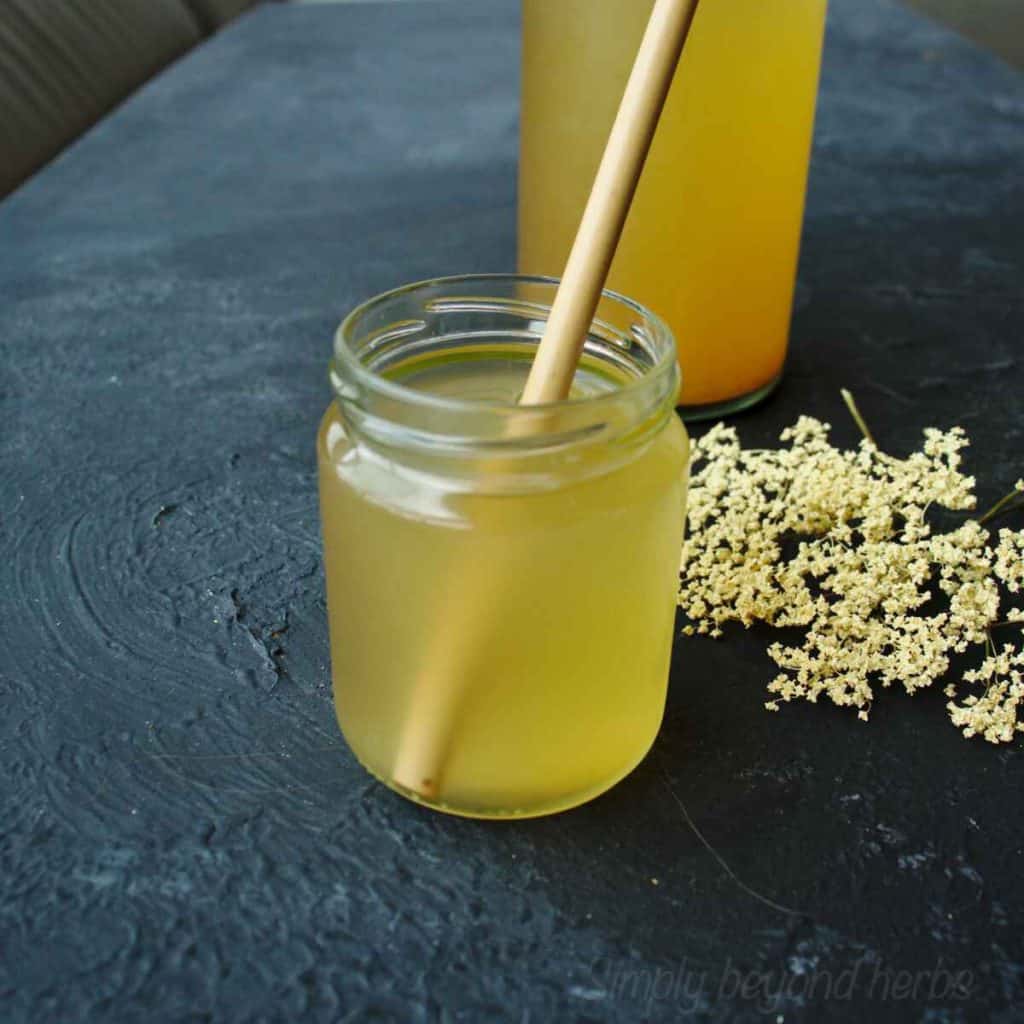
How does the process of fermentation work?
Fermentation is a biochemical process where wild yeasts convert sugar to ethanol, carbon dioxide, and other metabolic byproducts. Apples contain sugars as well as yeast. Yeast needs sugar to grow and reproduce; thus, sweet fruits contain a lot of yeast, providing an ideal environment for the yeast to grow.
People have been fermenting almost everything for thousands of years without adding additional yeast. So we will make this elderflower cider the old traditional way.
In addition, you can also homebrew your cider.

Sanitizing and sterilizing
Some people suggest sterilizing all the equipment with sulfites like Campden tablets to kill any wild yeasts.
While most commercial producers do so, I prefer to skip the chemicals and use soapy water instead. Rinse it with pre-boiled water, and let it dry. If you choose to sterilize it with a Campden tablet,s add one tablet per gallon of cider and wait 24 to 36 hours before proceeding.
Adding yeast
To maintain consistent marketable results, most modern brewers prefer adding pectin enzymes and yeast nutrients. It is essential to use them if you used Campden and killed natural yeast. If you decide to use champagne east, use half the pack for 1 gallon of Elderflower cider.
But my goal is not to have the same results every year. I enjoy the creative process and love the uniqueness of my elderflower cider. So I prefer to use natural wild yeast and make the whole fermentation process as our ancestors did – no high-tech equipment.

What Equipment do you need
- Press cider or juicer to make the apple juice
- One gallon glass Carboy – a fermentation vessel with a narrow neck to hold the elderflower cider while it ferments. This usually comes together with a rubber stopper and water lock which is a one-way valve that allows CO2 from the fermentation out but prevents anything from coming in to contaminate your elderflower cider
- Funnel
- Strainer
How to make Elderflower cider
First step
Once you gather the apples you need to get the juice out of them. The best way is to use a high-quality cider press if you have one. However, I used my juicer and it worked well for me.
The juicer separates the pulp and skin from the juice. The wild yeast is in the juice as well, not only on the skin, so the fermentation process will work even with preservative-free store-bought juice, or pressed cider.

Second step
Pour the cider from the juicer directly into the carboy using a strainer and funnel.
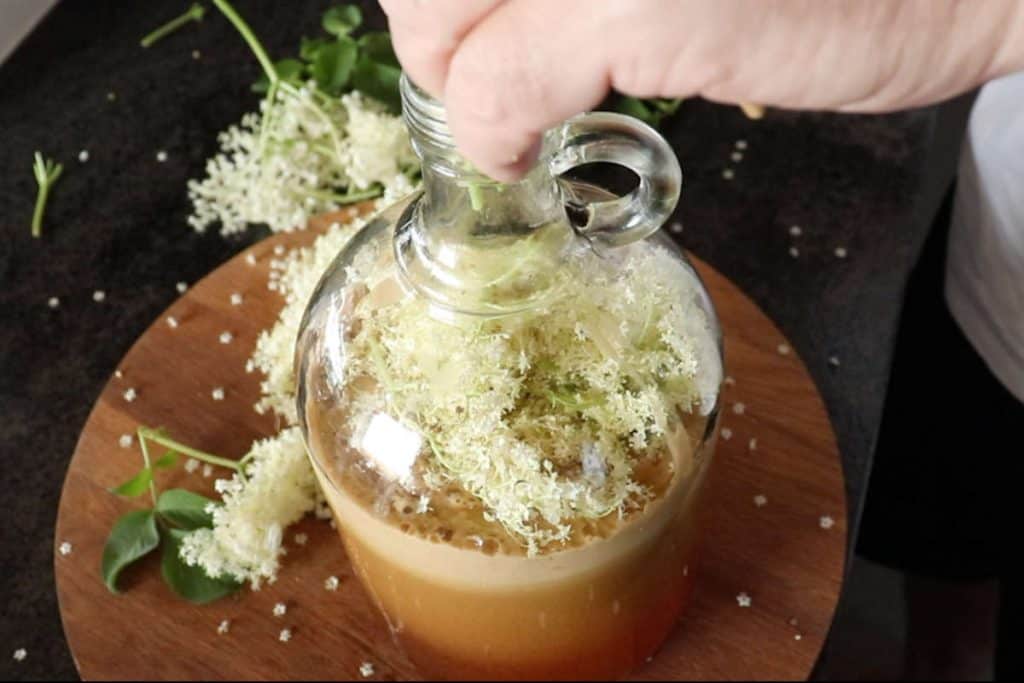
Third step
Add Elderflower blossoms into a cider and Cap it up with a water lock.

Fourth step
Place the elderflower cider in a cool and dark place like a cellar and let the fermentation begin!
During the first few days, the fermentation should begin and be very active with foam and bubbles to form.
After about 10- 15 days, the active fermentation should slow down to a stop. Depending on the weather, it can happen fast in warmer conditions or slower in colder.
A thick brown layer of dead yeast and apple solids are known as the lees should settle at the bottom of the jar during the fermentation.
Fifth step
As soon as the fermentation stops, bottle the elderflower cider. Use a strainer to get rid of the elderflowers and use clean sterilized bottles, like these, as they are convenient and reusable.
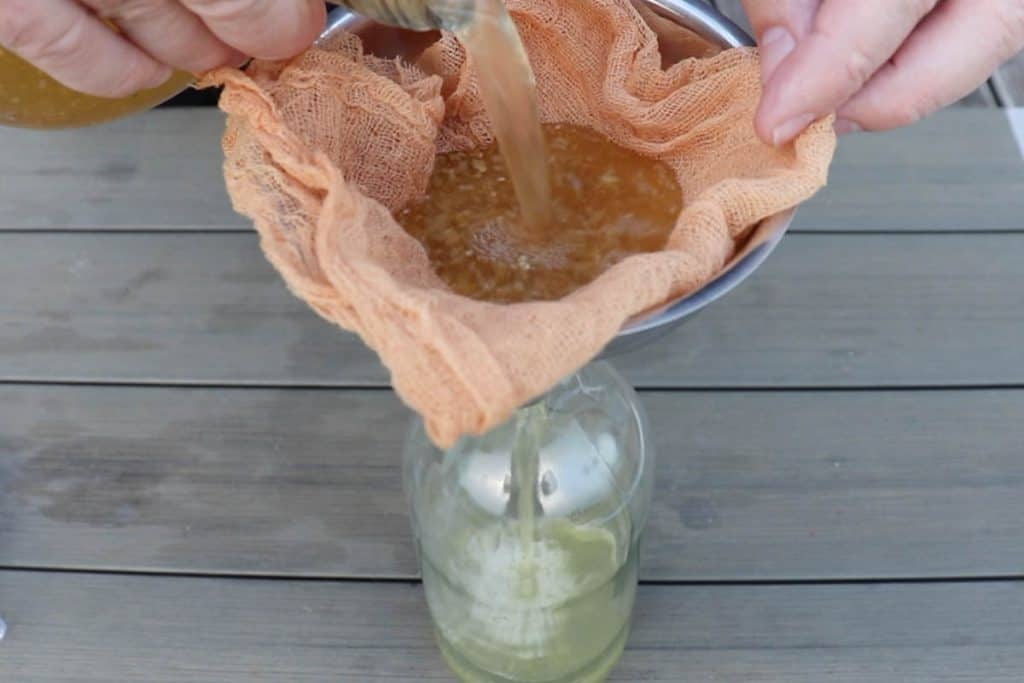
Keep it in a cool basement or fridge to avoid over-carbonation issues.
The final elderflower cider surprised me with its elderflower flavor and almost nonsweet taste. The final elderflower cider contains a very small amount of fermentable sugar as the yeast converted most sugars into alcohol. Even if you use sweet apples, your elderflower cider will yield a dry elderflower cider with higher content of alcohol.
No added sugar will give you around 6% alcohol. So now we can call it elderflower wine or elderflower champaign rather than elderflower cider as most of the sugar and other tannins have been eaten by yeast cells producing alcohol and carbon dioxide gas instead.

Adjuting the taste
I am happy with the result as I don’t like sweet drinks, and this elderflower wine is refreshing with a floral note of elderflowers. However, if you prefer sweet drinks you can add sugar. First, allow the fermentation to finish then add stabilizer (potassium sorbate) to kill off all the yeast. Lastly, add brown sugar as per your taste up to 1 pound. You can use also honey or maple syrup.
If the elderflower cider hasn’t begun bubbling within a few days, you should place it in a warmer place (room temperature) at the beginning to kick the fermentation process. Alternatively, add a wine or champagne yeast to kickstart the fermentation.
This elderflower cider will last for several months in the cellar or refrigerated.
Unpasteurized (unheated) apple cider should work. If you use pasteurized, the wild yeast is gone, so you will have to add some wine or champagne yeast (half package) to kick start the fermentation process.
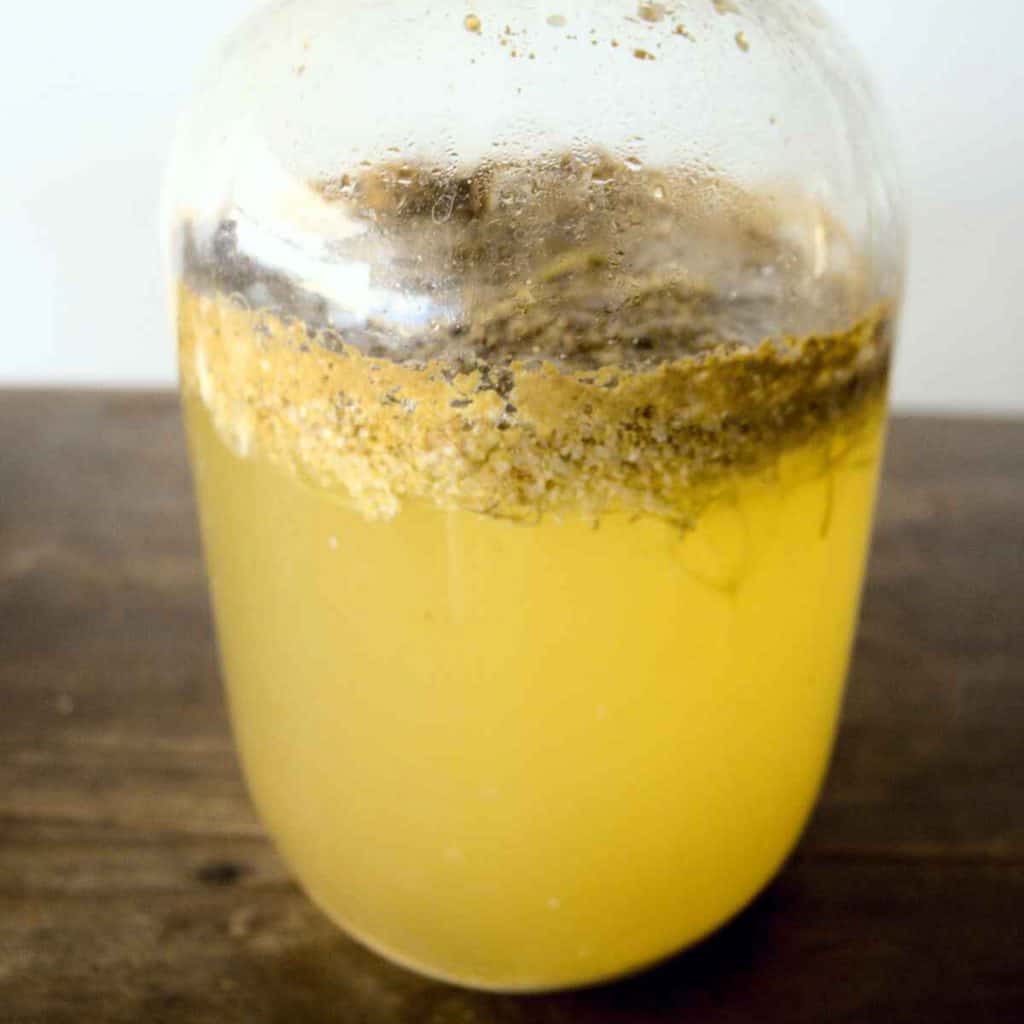
How to make Elderflower Cider

This floral and fruity elderflower cider makes it a uniquely refreshing drink. In addition, it is a creative way of preserving apples.
Ingredients
- 5 kg apples or 1-gallon preservatives free juice or cider
- 15 elderflower blossoms
Instructions
- use a cider press or a juicer to get the juice from the apples. Alternatively use store-bought apple juice or cider that is preservative-free.
- Pour the cider from the juicer directly into the carboy using a strainer and funnel.
- Add Elderflower blossoms into a cider and cap it up with a water lock.
- Place the elderflower cider in a cool and dark place like a cellar and let the fermentation begin!
- During the first few days, the fermentation should begin and be very active with foam and bubbles to form.
- After about 10- 15 days, the active fermentation should slow down to a stop. Depending on the weather, it can happen fast in warmer conditions or slower in colder.
- A thick brown layer of dead yeast and apple solids are known as the lees should settle at the bottom of the jar during the fermentation.
- As soon as the fermentation stops, bottle the elderflower cider. Use a strainer to get rid of the elderflowers and use clean sterilized bottles, like these, as they are convenient and reusable.
Recommended Products
As an Amazon Associate and member of other affiliate programs, I earn from qualifying purchases.
Nutrition Information:
Yield:
10Serving Size:
1Amount Per Serving: Calories: 154Total Fat: 0gSaturated Fat: 0gTrans Fat: 0gUnsaturated Fat: 0gCholesterol: 0mgSodium: 18mgCarbohydrates: 40gFiber: 6gSugar: 31gProtein: 1g
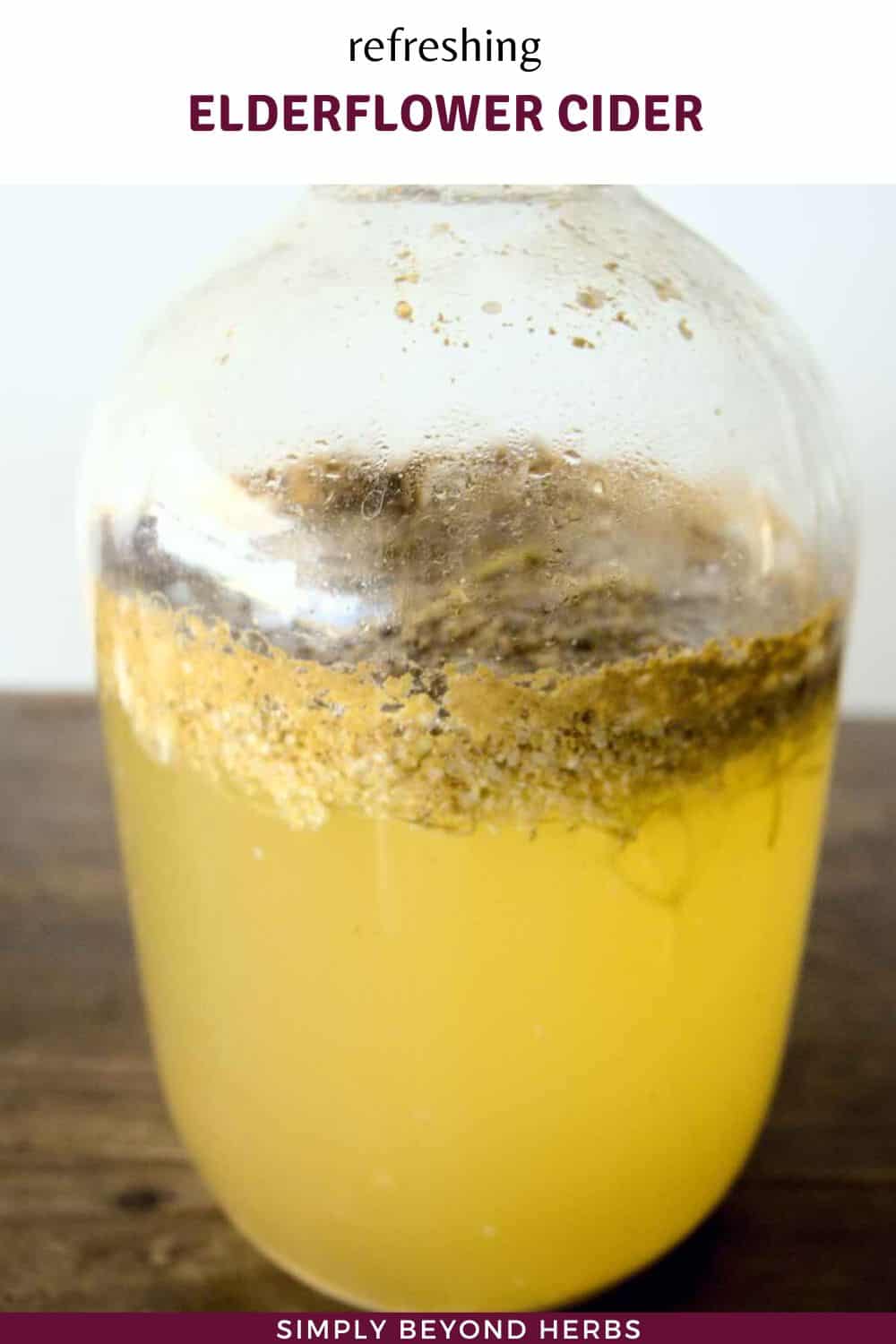








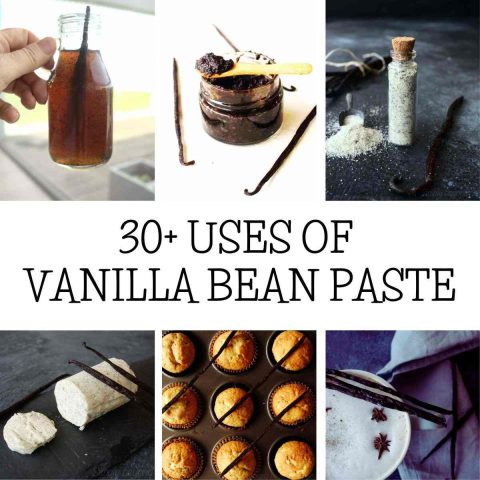

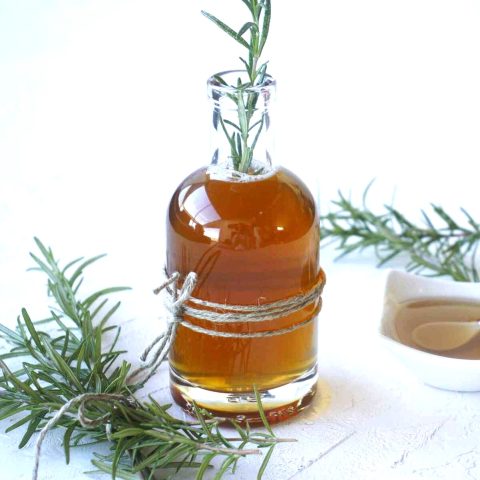


Hi! Don’t the elderflower blossoms mold in the mixture since you leave them there for the whole fermentation process?
No, it turned out delicious. However, you can use dried elderflowers to avoid any mold development. The fresh is more fragrant and add a delicious taste.